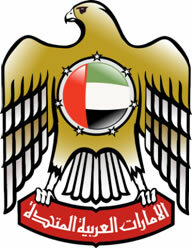Located on the Arabian Peninsula in the Middle East, the territory of the United Arab Emirates is limited to Saudi Arabia (to the south and west), Qatar and the Persian Gulf (to the north), Oman (to the east). The country is made up of seven emirates located at the entrance to the Persian Gulf, they are: Abu Dhabi, Ajman, Dubai, Fujairah, Ra’s al-Khaimah, Sharjah, Umm al-Quawain. This formation was officially established on December 2, 1971, and each of the emirates has full sovereignty over internal affairs.
Dubai, the best known emirate today, has the largest population concentration in the country. Its economy, unlike other emirates, is not based on oil and natural gas exploration, only 7% of local income comes from these products. The main responsible for Dubai's financial resources is the Jebel Ali Free Trade Zone, where it is located located the port of Dubai, in addition to the large number of transnational companies that leverage the economy.
This emirate is going through a major economic recession, with its debt being estimated at 80 billion dollars. A fact that led Dubai to request financial assistance from the emirate of Abu Dhabi (a major oil exporter).

Burj Khalifa, located in Dubai, is the largest building on the planet
The territory of the United Arab Emirates is desert and dotted with oases, with mountainous regions and beaches. The population is composed of a large presence of immigrants – approximately 75%. Islam is the predominant religion in the Emirates, however, its rules are more flexible, the consumption of alcoholic beverages is allowed in hotels and women can walk with their faces uncovered.
The national economy has oil as its main source of wealth. Its reserves are estimated to be in excess of 90 billion barrels. The country is of great importance to the world economy, as a result of economic trade policies based on tax exemptions for international capital investment.

Coat of arms
UAE data:
Territorial extension: 83,600 km².
Location: Middle East.
Capital: Abu Dhabi.
Climate: Arid tropical.
Government: Federation of Islamic Monarchies.
Administrative division: 7 emirates.
Language: Arabic.
Religion: Islam, 76.8%, Christianity, 12.5% (Catholics, 5.6%, Orthodox, 3.2%, others, 3.7%), Hinduism, 8.4%, no religion and atheism, 2.3%.
Population: 4,598,600 inhabitants. (Men: 3,093,246; Women: 1,505,354).
Ethnic Composition: Emirian Arabs, 25%, other Arabs, 23%, South Asians, 50%, others, 2%.
Demographic density: 55 inhab/km².
Average annual population growth rate: 0.23%.
Population residing in urban areas: 77.95%.
Population residing in rural areas: 22.05%.
Undernourished population: less than 5%.
Life expectancy at birth: 78.5 years.
Households with access to drinking water: 100%.
Households with access to a health network: 97%.
Human Development Index (HDI): 0.815 (very high).
Currency: Dirham.
Gross Domestic Product (GDP): US$ 191,465 million.
GDP per capita: US$43,709.
External relations: World Bank, IMF, WTO, UN, OPEC.
By Wagner de Cerqueira and Francisco
Graduated in Geography
Brazil School Team
countries - geography - Brazil School
Source: Brazil School - https://brasilescola.uol.com.br/geografia/emirados-Arabes-unidos.htm

